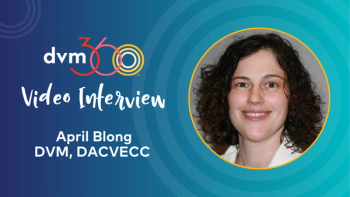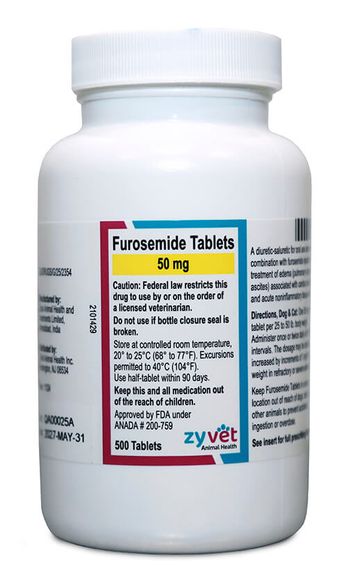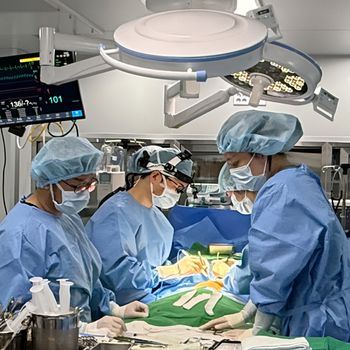
Current strategies on diagnosis and treatment of feline cardiomyopathy (Proceedings)
Feline heart disease is common and can be challenging to diagnose.
Diagnosis
Feline heart disease is common and can be challenging to diagnose. Cats are often asymptomatic until they develop severe disease. While clinical signs and radiographs may suggest presence of heart disease in cats, echocardiography is required for diagnosis of the specific etiology and severity of heart disease. Feline cardiomyopathies are the most common heart diseases in cats, and are divided into 4 etiologies: hypertrophic cardiomyopathy, dilated cardiomyopathy, unclassified or restrictive cardiomyopathy, and arrhythmogenic right ventricular cardiomyopathy. It is important to define the specific type of heart disease since it helps determine the treatment and prognosis.
Thoracic radiographs
Thoracic radiographs are useful to assess whether there are pulmonary infiltrates or pleural effusion, and may identify significant cardiomegaly. Calculation of the vertebral heart scale may be useful to quantify cardiac size and confirm cardiomegaly. The long- and short-axis measurements of the heart, expressed in vertebral lengths starting at the fourth thoracic vertebrae, are added to yield vertebral heart size (VHS). Normal VHS is 7.4 ± 0.3 in cats Left sided congestive heart failure (CHF) may be evidenced by presence of patchy interstitial to alveolar pulmonary infiltrates with no typical pattern of distribution, unlike the dog that has a classic pattern of perihilar to caudal distribution. Pulmonary venous distension and left atrial dilation are commonly seen with CHF. Pleural effusion may be caused by left or right heart failure. Dorsal deviation of the trachea has not been shown to be specific for cardiomegaly in cats with pleural effusion. Thoracic radiographs are insensitive for diagnosis of mild cardiac disease, and are not helpful to detect concentric hypertrophy of the ventricle, as overall heart size is not increased. Thoracic radiographs are essential to monitor for presence and severity of heart failure as well as adequacy of heart failure treatment. The electrocardiogram is useful to evaluate for arrhythmias in cats presenting for complaint of syncope or episodic weakness, or in cats with an arrhythmia detected on auscultation. Electrocardiography is insensitive for diagnosis of ventricular hypertrophy in cats with HCM.
Measurement of circulating biomarkers
Measurement of circulating biomarkers, such as brain natriuretic peptide (BNP), may identify cats with cardiac disease or CHF. BNP is synthesized normally in the atria, but there is increased synthesis in the ventricle with cardiac disease. N-terminal proBNP is a fragment formed by the cleavage of proBNP, and has a longer circulating half-life than BNP. In a study of 66 dyspnic cats with primary respiratory disease and 101 cats with dyspnea secondary to heart failure, NT-proBNP was significantly increased in cats with heart failure (P<0.001, median for CHF= 846 pmol/L; 1o respiratory = 53 pmol/L). NT-proBNP >180 was highly sensitive (94%) and specific (86%) for detection of CHF in dyspnic cats. NT-proBNP was also measured in 14 normal control cats and 23 asymptomatic cardiomyopathic cats, and was significantly higher in asymptomatic cardiomyopathic cats (P<0.001, median for control= 24 pmol/L, median for asymptomatic cardiomyopathy= 283 pmol/L). NT-pro-BNP > 70 pmol/L was highly sensitive (87.5%) and specific (100%) for detection of asymptomatic cats with cardiomyopathy.
Echocardiography
Echocardiography is the essential diagnostic tool to diagnose the specific etiology of heart disease as well as characterize the severity of the disease. Criteria for diagnosis of the specific cardiomyopathies by echocardiography are discussed below. Assessment of left atrial size is an essential tool for risk stratification for congestive heart failure or arterial thromboembolism. Cats with left atrial dilation have increased diastolic filling pressure and are at risk for development of heart failure or may have concurrent heart failure at the time of examination. Cats with echocardiographic evidence of left atrial dilation need to be further evaluated with thoracic radiographs to assess for presence of congestive heart failure. Echocardiography is also essential for assessment of spontaneous echocardiographic contrast, which is present when red blood cells aggregate, and often precedes development of an intracardiac thrombus. Cats with spontaneous echocardiographic contrast or an intracardiac thrombus (often within the left atrium or auricle) need to be placed on an anticoagulant, and the owner appropriately counseled regarding the high likelihood of an impending arterial thromboembolism.
Electrocardiogram
An electrocardiogram (ECG) is the test of choice for evaluation of arrhythmias. An ECG should be done on any cat with history of episodic weakness or syncope, or if an arrhythmia was ausculted on examination. Common arrhythmias include ventricular premature complexes, atrial premature complexes, supraventricular tachycardia, ventricular tachycardia, or atrial fibrillation. Certain arrhythmias including ventricular tachycardia, supraventricular tachycardia, or atrial fibrillation with a rapid ventricular response rate warrant immediate antiarrhythmic therapy.
Other diagnostic tests
Systolic blood pressure and serum thyroxine concentration must be measured in cats with concentric hypertrophy to rule out secondary causes of concentric left ventricular hypertrophy. Genetic screening tests have been developed for detection of two mutations of myosin binding protein C occurring in Maine Coon cats and Ragdoll cats, and may be useful for breeding programs.5,6 Plasma and whole blood taurine concentration should be measured in any animal with myocardial failure. Normal plasma and whole blood taurine concentrations are > 60 nmol/ml and > 250 nmol/ml respectively. Taurine deficiency induced DCM must not be missed as it is a curable form of DCM compared to the grave prognosis of idiopathic DCM.
Specific cardiomyopathies
Hypertrophic cardiomyopathy
HCM is diagnosed by echocardiographic measurement of the end-diastolic left ventricular wall or interventricular septal thickness of > 6 mm. Hypertrophy may be symmetrical or assymetrical. Papillary hypertrophy may be an early abnormality even when the wall thickness is normal. Systolic anterior motion (SAM) of the mitral valve should be assessed in the right parasternal long-axis left ventricular outflow tract view using 2 dimensional echocardiography and color flow Doppler. Color flow Doppler depicts mitral regurgitation and turbulent blood flow in the left ventricular outflow tract and aorta arising from the obstruction of the left ventricular outflow tract by the anterior mitral leaflet. Pulsed wave and continuous wave Doppler are performed in the left apical 5- chamber view to measure the aortic blood flow velocity and determine the severity of the SAM. Left atrial size is measured by 2- dimensional echocardiography in the right parasternal short-axis view at the base of the heart. Left atrial to aortic diameter ratio > 1.5 identifies left atrial dilation. Evaluation of spontaneous contrast of red cell aggregation or thrombus formation in the left atrium is also important. Diastolic dysfunction may be assessed using pulsed wave Doppler of the mitral inflow and pulmonary venous flow. Delayed relaxation or restrictive patterns may be identified which denote worsening stages of diastolic dysfunction respectively. However, there is an intermediate flow pattern termed "pseudonormalization" which may mask diagnosis of diastolic dysfunction. Tissue Doppler imaging (TDI) echocardiography is useful to detect diastolic impairment, which is evidenced by reduced early diastolic myocardial velocities of the left ventricular free wall in short-axis or reduced lateral mitral annular velocity or septal velocity in the left 4-chamber apical view.
Treatment of asymptomatic cats is debatable. The same scenario exists in human medicine, and treatment of asymptomatic people is on an "empiric basis without controlled data to either support or contradict is potential efficacy". Treatment goals include reduction in LV hypertrophy, reduction in systolic anterior motion (SAM) of the mitral valve if it is more than mild, and improvement in diastolic function. Asymptomatic cats with severe HCM are often treated. Beta blockers and calcium channel blockers have anecdotally been shown to reduce hypertrophy is some cats. There is a lack of studies evaluating beta blockers and calcium channel blockers in cats with HCM. A small, unblinded, uncontrolled study evaluated the effect of diltiazem on left ventricular (LV) hypertrophy and diastolic function in 12 cats, and found that diltiazem reduced LV hypertrophy and improved LV relaxation time over the 6 months of therapy. A recent abstract presented at the 2007 ACVIM forum by Schober et al. evaluated the effects of atenolol versus diltiazem in asymptomatic cats with HCM. Results were relatively underwhelming. Atenolol had modest effects with improvement in one variable of diastolic function and slightly reduced septal wall thickness, and there were no significant effects of diltiazem on diastolic function, left atrial size, or LV hypertrophy. Atenolol also reduced the severity of SAM of the mitral valve, and diltiazem did not.
Angiotensin converting enzyme (ACE) inhibition has been shown to reduce LV hypertrophy in 2 small, uncontrolled or retrospective studies, where LV hypertrophy was assessed by either M-mode or 2-dimensional echo. However, 2-dimensional echocardiographic assessment of LV hypertrophy is fraught with high inter-and intraobserver variability of 18-20% respectively. The author completed a double blinded, placebo controlled, randomized, prospective study evaluating the effect of ramipril on LV mass, diastolic function, neurohormones, and blood pressure in 26 Maine coon and Maine coon-cross cats with mild to severe familial HCM without CHF. LV mass was quantified by cardiac magnetic resonance imaging, diastolic function was assessed by pulsed wave tissue Doppler imaging (TDI), and plasma concentration of aldosterone and brain natriuretic peptide were measured. There was no difference in LV mass, diastolic function, delayed contrast enhancement assessment of myocardial fibrosis, blood pressure, or neurohormones between the placebo and ramipril treatment groups.
A small, double blinded, placebo controlled prospective study evaluating the effect of spironolactone on diastolic function assessed by TDI and on LV mass quantified by echocardiography was done on 26 Maine Coon cats with familial HCM without CHF. All cats had diastolic dysfunction at baseline. Cats were given 2 mg/kg PO BID of placebo or spironolactone for 4-months, and echocardiography was performed every 2 months. There was no difference in diastolic function or systolic function assessed by TDI, LV mass, or left atrial size. Serum aldosterone concentration was markedly elevated in cats treated with aldosterone. Approximately one-third of cats given spironolactone developed severe facial ulcerative dermatitis, which may have been caused by a drug reaction.
The largest multicenter clinical study to date has evaluated the effect of atenolol, diltiazem, and enalapril on survival in symptomatic cats with CHF or arterial thromboembolism secondary to cardiomyopathy (mostly due to HCM). Cats received a background therapy of furosemide if CHF was present. None of the drugs improved survival, and there was a trend in reduced survival in the atenolol group.
Dilated cardiomyopathy
Dilated cardiomyopathy (DCM) consists of primary systolic myocardial failure. In response to reduced contractility, there is reduced cardiac output, which triggers volume expansion through the renin-angiotensin-aldosterone system, which leads to compensatory development of left ventricular eccentric hypertrophy. Less blood is ejected during systole and remains in diastole, which further increases left ventricular diastolic filling pressure. Pulmonary edema and pleural effusion may occur secondary to left sided CHF, and ascites and pleural effusion may occur secondary to right sided CHF. Other cardiac diseases that can lead to myocardial failure and may mimic DCM include severe volume overload of the left ventricle such as severe mitral regurgitation or left to right shunts. The myocardial failure and shortening fraction are not as severely reduced as in primary DCM. Taurine deficiency induced DCM was discovered in 1987, and was secondary to inadequate dietary intake of this essential amino acid in cats. Only 30% of taurine deficient cats develop echocardiographic evidence of myocardial failure. There is a prolonged occult phase when the cat is asymptomatic. Since modern feline diets are supplemented with taurine, these cases are rarely seen and the majority of cases are idiopathic. Cats fed exclusively one canned diet or vegetarian diets occasionally develop taurine deficiency induced DCM. Echocardiographic diagnosis of DCM is relatively straight-forward. Increased end systolic diameter (> 10 mm), reduced shortening fraction (<28 %, <20% in severe DCM), increased E point to septal separation (> 4 mm), and compensatory increased end diastolic diameter (> 18 mm) are abnormalities seen on echocardiography of the left ventricle. Left atrial enlargement is present in moderate to severe cases. Right ventricular and right atrial dilation may also be seen. TDI reveals reduced systolic myocardial velocity. Color flow Doppler often shows centrally arising mild mitral regurgitation secondary to annular dilation and lack of valve coaptation.
Positive inotropic treatment with digoxin (¼ of 0.125 mg PO q 24 -48 hours) and likely pimobendan (0.25- 0.3 mg/kg PO BID, not labeled for use in cats) is recommended for severe DCM (when fractional shortening is 20 % or lower). Treatment of moderate DCM without CHF is debatable. Although taurine deficiency induced DCM is much less common now than idiopathic DCM, supplementation with taurine (250 mg PO BID) should be started while whole blood and plasma taurine concentrations are pending. Taurine supplementation in deficient cats leads to clinical improvement in several weeks, and measurable improvement in systolic function in 2-4 months (sometimes earlier). Myocardial function normalizes in these patients. Furosemide and an ACE inhibitor should be started if there is evidence of CHF. Thoracocentesis should be performed to remove pleural effusion. Antiarrhythmic drugs are not usually necessary, but can be used if there are severe tachyarrhythmias such as ventricular tachycardia, atrial fibrillation, or supraventricular tachycardia, with avoidance of strong negative inotropes such as beta blockers or high doses of calcium channel blockers. Severe ventricular arrhythmias may be treated with mexilitene 5-8 mg/kg PO TID sotalol (2 mg/kg PO BID). Supraventricular arrhythmias may be treated with diltiazem or sotalol and digoxin.
Feline unclassified cardiomyopathy
This nebulous category consists of cats with left atrial enlargement right atrial enlargement in the absence of significant concentric hypertrophy and normal to only mildly reduced systolic function. Significant valvular insufficiency must be ruled out, which may be difficult given the high heart rates of cats. Atrial dilation in cats with unclassified cardiomyopathy may be secondary to diastolic dysfunction or due to a form of atrial myopathy. Diastolic function assessed by TDI echocardiography in unclassified cardiomyopathy may be normal.
Restrictive cardiomyopathy
Restrictive cardiomyopathy is a subset of unclassified cardiomyopathy that is characterized by severe diastolic impairment and increased stiffness secondary to infiltration of the endocardium, subendocardium, or myocardium with fibrosis. There is normal to only mildly increased wall thickness, normal to mildly decreased systolic function, and atrial dilation. Echocardiography may reveal severe fibrotic bands bridging the left ventricle or extensive left ventricular endomyocardial fibrosis. Early diastolic myocardial velocity is reduced in cats with restrictive cardiomyopathy. Delayed relaxation, pseudonormal, or restrictive patterns may be seen using PW Doppler of mitral inflow. Left atrial thrombus or spontaneous contrast may be seen in cats with severe RCM, and 45% of cats suffer from arterial thromboembolism.
Treatment of unclassified or restrictive cardiomyopathy
Restrictive cardiomyopathy is characterized by severe endomyocardial fibrosis and bridging fibrotic bands, which greatly reduces the compliance of the left ventricle and leads to diastolic heart failure. Beta blockers or calcium channel blockers are not useful to treat endomyocardial fibrosis, but may be used to treat significant tachyarrhythmias. Anticoagulant therapy (as discussed above) is often necessary in cats with moderate or severe atrial dilation as there is a high incidence of arterial thromboembolism of 45% in cats with restrictive cardiomyopathy. Heart failure treatment is outlined above.
Arrhythmogenic right ventricular cardiomyopathy (ARVC)
ARVC is a rare form of cardiomyopathy in cats, and is more common in Boxer dogs and people. It consists of fatty or fibrofatty infiltration of the right atrium and right ventricle, with subsequent severe dilation of those chambers. The etiology of ARVC in cats is unknown. In a case series of 12 cats, middle aged, male domestic shorthair cats were most commonly affected with ARVC. Fatty replacement of the cardiomyocytes results in systolic myocardial failure diastolic dysfunction. Echocardiography reveals right atrial and right ventricular dilation. The right ventricular wall is commonly thin and there may be right ventricular aneurysms. Centrally arising tricuspid regurgitation occurs secondary to tricuspid annular dilation and lack of valve coaptation. Right sided CHF including pleural effusion and ascites was seen in 67% of cats with ARVC. Ventricular tachyarrhythmias are common (75%), as well as supraventricular tachyarrhythmias (42%). Changes mostly involve the right heart, but changes may also occur to a lesser extent in the left ventricle and left atrium. The main differential diagnosis of ARVC is tricuspid valve dysplasia, a congenital heart defect. Prognosis of cats with ARVC is grave, with a median survival of 1 month (range 2 days to 4 months).
Arrhythmogenic right ventricular cardiomyopathy is typically treated similarly to idiopathic DCM, with use of positive inotropes, furosemide, and an ACE inhibitor. Since ventricular tachyarrhythmias are common (75%), as well as supraventricular tachyarrhythmias (42%), antiarrhythmic therapy may be needed as described above. Indications for anticoagulant therapy are outlined above.
Treatment of congestive heart failure
Treatment of CHF is similar regardless of the specific cardiac disease present, and includes furosemide and an angiotensin converting enzyme (ACE) inhibitor. Furosemide may be given parenterally (1-3 mg/kg every 1-4 hours) in cats with fulminant CHF, and the furosemide dose should be rapidly tapered once the respiratory rate and effort begin to improve. Although efficacy is unknown, the venodilator nitroglycerin may be applied transdermally every 6 hours for 2 days (until tolerance develops) for hospitalized patients. Oxygen therapy is necessary in severe cases, and the fractional inspired oxygen percentage should be decreased to 50% or less if possible within 12 hours to avoid further barotrauma. An ACE inhibitor can be slightly postponed in cats receiving aggressive diuresis, until the cat is eating, drinking, and not severely dehydrated since it may potentiate azotemia in dehydrated cats. Chronic oral dosing of furosemide may be started at 1 mg/kg PO q24 hr- BID and increased over time as the severity of CHF worsens to a maximal ceiling dose of 4 mg/kg PO TID. Pimobendan (0.25 mg/kg PO BID) is used in cats with myocardial failure and heart failure. In cats receiving maximal furosemide doses that have refractory CHF, an additional diuretic may be added such as hydrochlorothiazide (1-2 mg/kg PO q24 hr – BID). Some degree of azotemia is expected in cats receiving aggressive diuretic therapy.
Anticoagulant therapy
Anticoagulant therapy is necessary in cats that have suffered from arterial thromboembolism or who have echocardiographic evidence of a thrombus or spontaneous contrast within the left atrium, and may be considered in cats with moderate or severe left atrial dilation. Aspirin (5 mg – 81 mg PO q 3 days) has relatively underwhelming and variable success in prevention of thromboembolism. In cats suffering from arterial thromboembolism, survival with or without thrombolytic therapy is only 30-40%. Recurrence rate with aspirin (standard or low dose) is variable and ranges from 28-90%.Clopidogrel is a novel anti-platelet agent that irreversibly inhibits ADP receptors on platelet membranes. Clopidogrel has been shown to inhibit platelet aggregation, increase oral mucosal bleeding time, and reduce plasma serotonin concentration in normal cats at doses as low as 18.75 mg PO q 24 hours. Low molecular weight heparins (LMWH) such as dalteparin and enoxaparin are attractive alternatives to unfractionated heparin given their increased bioavailability and prolonged half lives. Compared to unfractionated heparin, LMWHs work more specifically upstream in the coagulation cascade against Factor X with much lower activity against thrombin (Factor II). Since there is less anti-II activity, LMWHs do not alter PT and APTT times, and therapeutic efficacy must be assessed by measurement of anti-Xa activity. There are only a few pilot studies evaluating pharmacokinetics of dalteparin and enoxaparin in healthy cats. 1.5 mg/kg of enoxaparin SQ appears to adequately suppress factor Xa activity, but the optimal dosing interval is less clearly defined. Dosing frequencies of BID to TID are likely necessary for sustained anti-Xa activity. In cats suffering from arterial thromboembolism, thrombolytic therapy with streptokinase, tissue plasminogen activator, or urokinase are generally not recommended as they are associated with approximately 50% mortality, the same mortality as conservative supportive therapy.
References
Litster AL and Buchanan JW, Vertebral Scale System to Measure Heart Size in Radiographs of Cats. J Am Vet Med Assoc. 2000;216:210-4
Snyder PS, Sato T, and Atkins CE. The Utility of Thoracic Radiographic Measurement for the Detection of Cardiomegaly in Cats with Pleural Effusion. Vet Radiol 1990;31(2): 89-91.
Fox PR, Oyama MA, MacDonald KA et al. Comparison of NT-proBNP concentrations in cats with acute dyspnea from cardiac or respiratory disease. J Vet Intern Med 22(2), 2008. Abstract.
Fox PR, Oyama MA, MacDonald, KA et al. Assessment of NT-proBNP concentration in asymptomatic cats with cardiomyopathy. J Vet Intern Med 22(2). 2008. Abstract
Meurs KM, Sanchez C, David RM et al. A Cardiac Myosin Binding Protein C Mutation in the Maine Coon Cat With Familial Hypertrophic Cardiomyopathy 2005; 14(23):3587-93.
Meurs KM, Norgard MM, Ederer MM et al. A Substitution Mutation in the Myosin Binding Protein C Gene in Ragdoll Hypertrophic Cardiomyopathy. Genomics 2007;90:261-4.
Bright, J. M., Golden, A. L., Gompf, R. E., Walker, M. A., and Toal, R. L. Evaluation of the Calcium Channel-Blocking Agents Diltiazem and Verapamil for Treatment of Feline Hypertrophic Cardiomyopathy. Journal of Veterinary Internal Medicine 1991;5:272-82.
Rush, J. E., Freeman, L. M., Brown, D. J., and Smith, FW Jr. The Use of Enalapril in the Treatment of Feline Hypertrophic Cardiomyopathy. Journal of the American Animal Hospital Association 1998;34(1):38-41.
Amberger, CN; Glardon O; Glaus, T; Horauf, A; King, FN; Schmidli, H; Schroter, L; Lombard, CW. Effects of benazepril in the treatment of feline hypertrophic cardiomyopathy; Results of a prospective, open-label, multicenter clinical trial. Journal of Veterinary Cardiology 1[1], 19-26. 5-1-1999. 10. MacDonald, KA, Kittleson MD, Larson RF, Kass P, Klose T, and Wisner ER. The Effect of Ramipril on Left Ventricular Mass, Myocardial Fibrosis, Diastolic Function and Plasma Neurohormones in Maine Coon Cats With Familial Hypertrophic Cardiomyopathy With No Heart Failure. J Vet Intern Med. 2006;20:1093-105.
MacDonald, K. A., Kittleson, M. D., and Kass, P. H. Effect of Spironolactone on Diastolic Function and Left Ventricular Mass in Maine Coon Cats With Familial Hypertrophic Cardiomyopathy. J Vet Intern Med. 2008;22:335-41.
Fox, P. R. Prospective, double-blinded, multicenter evaluation of chronic therapies for feline diastolic heart failure: interim analysis. 21st Annual ACVIM Forum Proceedings , #952. 6-4-2003. 13. Pion PD, Kittleson MD, Rogers QR et al. Myocardial Failure in Cats Associated With Low Plasma Taurine: a Reversible Cardiomyopathy. Science 1987; 237:764-8. 14. Fox PR, Maron JB, Basso C, et al. Spontaneously Occurring Arrhythmogenic Right Ventricular Cardiomyopathy in the Domestic Cat: A New Animal Model Similar to the Human Disease. Circulation 2000; 102(15):1863-70
Pion, P. D. Feline Aortic Thromboemboli: T-PA Thrombolysis Followed by Aspirin Therapy and Rethrombosis. Vet.Clin.North Am.Small.Anim.Pract. 1988;18:262-3.
Smith, S. A., Tobias, A. H., Jacob, K. A., Fine, D. M., and Grumbles, P. L. Arterial Thromboembolism in Cats: Acute Crisis in 127 Cases (1992-2001) and Long-Term Management With Low-Dose Aspirin in 24 Cases. Journal of Veterinary Internal Medicine 2003;17(1):73-83.
Hogan, D. F., Andrews, D. A., Green, H. W., Talbott, K. K., Ward, M. P., and Calloway, B. M. Antiplatelet Effects and Pharmacodynamics of Clopidogrel in Cats. Journal of the American Veterinary Medical Association 2004;225(9):1406-11.
Alwood, A. J., Downend, A. B., Brooks, M. B., Slensky, K. A., Fox, J. A., Simpson, S. A., Waddell, L. S., Baumgardner, J. E., and Otto, C. M. Anticoagulant Effects of Low-Molecular-Weight Heparins in Healthy Cats. J Vet Intern Med. 2007;21:378-87.
Newsletter
From exam room tips to practice management insights, get trusted veterinary news delivered straight to your inbox—subscribe to dvm360.






